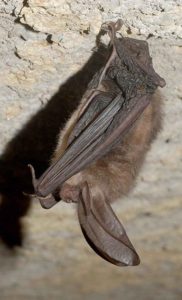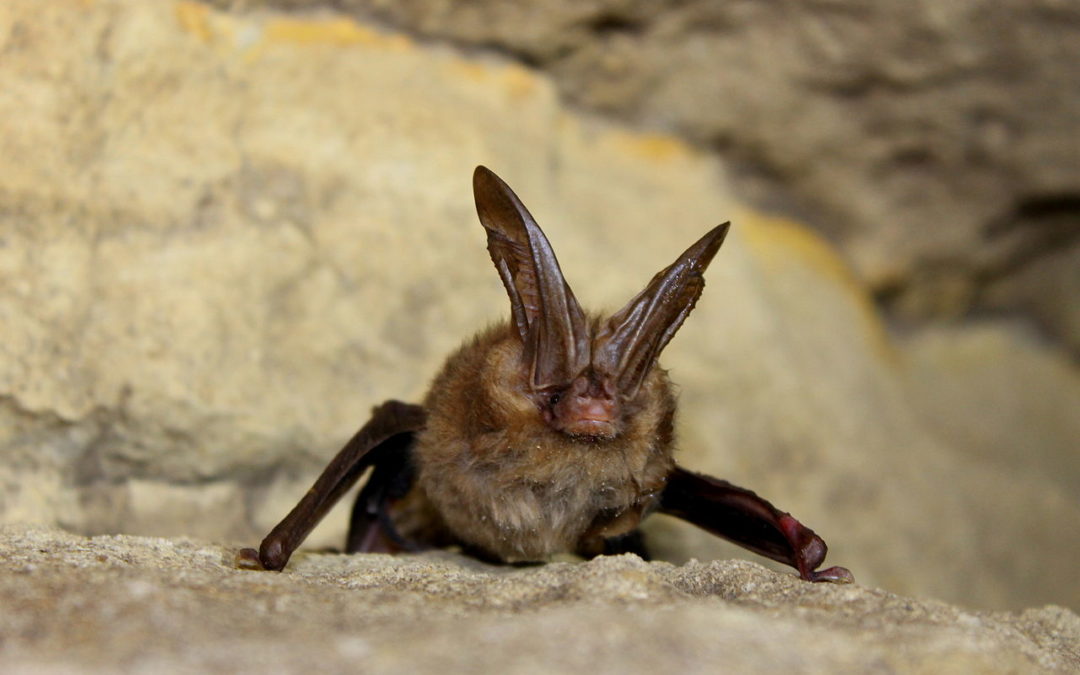 As Halloween grows near and people search out for ghosts and ghouls, one favorite fluttering treat is the occasional sight of a bat in the evening. Despite Hollywood’s attempt to create a fearsome façade there is nothing to fear from any of Virginia’s native bat species, unless, of course, you are a moth.
As Halloween grows near and people search out for ghosts and ghouls, one favorite fluttering treat is the occasional sight of a bat in the evening. Despite Hollywood’s attempt to create a fearsome façade there is nothing to fear from any of Virginia’s native bat species, unless, of course, you are a moth.
The Virginia Big-eared Bat (Corynorhinus townsendii virginianus) is Virginia’s state bat, and is considered federally and state endangered. Ranging from pale to dark brown this medium sized bat is native to southwestern Virginia as they prefer caves in Karst regions (areas with limestone bedrock) and hibernate in tight cluster near the entrances of caves that are well ventilated. They get their namesake from their characteristic ears, generally more than an inch long, which are large compared to their 3 to 4 inch body. Adding to their unique gothic appearance they have large glands on each side of their muzzle.
Human disturbance is one of the largest factors contributing to the demise of these bats. Disturbing bats during hibernation can cause them to lose fat reserves, drop their young and after repeated disturbances, even death. Another threat to this already endangered animal is the poorly understood White-Nose Syndrome. This is identified by a characteristic white fungus that forms around the muzzle of many species of bats, and causes erratic behavior. Already having killed over one million bats in the United States, this syndrome is considered “worst wildlife health crisis in memory”.
For more information:
Virginia’s State Bat: The Virginia Big-eared Bat
Photo credits:
Featured image:By Larisa Bishop-Boros (Own work) [CC BY-SA 3.0 (http://creativecommons.org/licenses/by-sa/3.0)], via Wikimedia Commons
Article image: Stihler Craig, U.S. Fish and Wildlife Service [Public domain], via Wikimedia Commons

